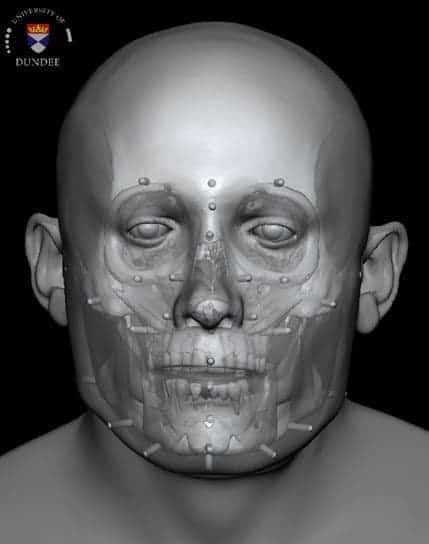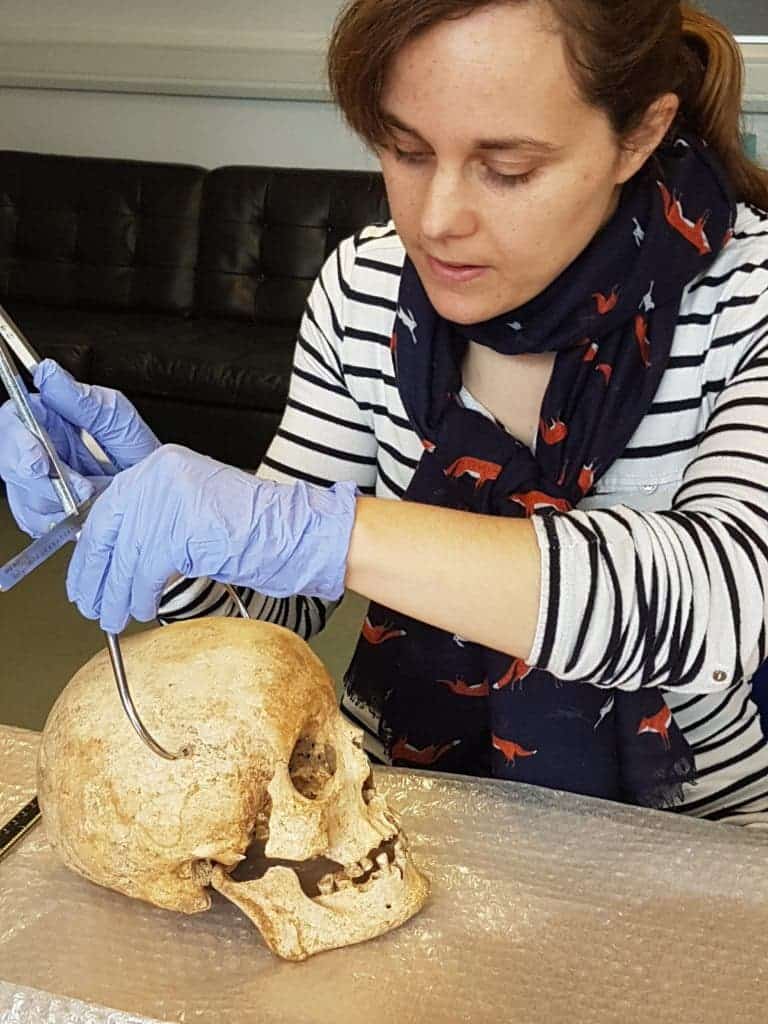This remarkably realistic digital reconstruction shows what the face of a man living in Middle Age England must have looked like around the time he died. The facial reconstruction carried out by a team from the University of Cambridge offers unique insight into the lives of the poor living around that time whose stories are typically forgotten, never to be remembered.

The man’s complete skeleton remains were among some 400 burials discovered by accident when the Old Divinity School of St John’s College at Cambridge was excavated between 2010 and 2012. The site was eventually recognized as one of the largest medieval hospital graveyards in Britain.
The bodies were buried in the graveyard of the Hospital of St. John the Evangelist from the 13th through the 15 century. This hospital was an Augustinian charitable establishment which provided care to the disenfranchised who were too sick to look after themselves.

From the outset, this context tells us that our hero, unceremonially named Context 958, was an inmate at St John’s Hospital and hence wasn’t very well off. His life story, however, was gleaned from subtle cues etched in his bony remains.
Professor John Robb, from the University’s Division of Archaeology, worked in close collaboration with Dr Chris Rynn from the University of Dundee’s Centre for Anatomy and Human Identification, analyzed the poor man’s bones and teeth.
The analysis showed Context 958 was around 40 years of age when he passed, which was about the life expectancy in that day and age. We don’t know his trade but weathering patterns on his teeth suggest he had a diet of fish and meat and the wear-and-tear on his skeleton indicates he led a life of hard work. These clues suggest his profession gave him access to food that was typically unavailable to other members of the working class. Perhaps he was a fisherman or worked on a farm. Whatever the case, his best days were long behind him when he ended up at St John’s.

“He had fallen on hard times, perhaps through illness, limiting his ability to continue working or through not having a family network to take care of him in his poverty,” Robb said in a statement.
His teeth, whose enamel stopped growing on two occasions, also suggests Context 958 was accustomed to the arduous life — he likely experienced bouts of severe famine and scarcity during his early years. Moreover, there are clear marks of trauma on the back of his skull. The wound healed, however, which tells us he wasn’t killed by the blow to the head.
Another unusual thing about Context 958 is that he was buried face down, which was not common practice.

“He has a few unusual features, notably being buried face down which is a small irregularity for medieval burial. But, we are interested in him and in people like him more for ways in which they are not unusual, as they represent a sector of the medieval population which is quite hard to learn about: ordinary poor people,” said Robb.
All of these findings are speculative. There aren’t any written records about Context 958’s life — he doesn’t even have a proper name. At the same time, it’s remarkable how science can infer so many intimate details from so little information. Five hundred years later, this man’s face is known the living once more.
“Most historical records are about well-off people and especially their financial and legal transactions – the less money and property you had, the less likely anybody was to ever write down anything about you. So skeletons like this are really our chance to learn about how the ordinary poor lived,” said Robb.
“This helps us communicate our work to the public, but it also helps us imagine them ourselves as leading complex lives like we do today. That’s why putting all the data together into biographies and giving them faces is so important.”


